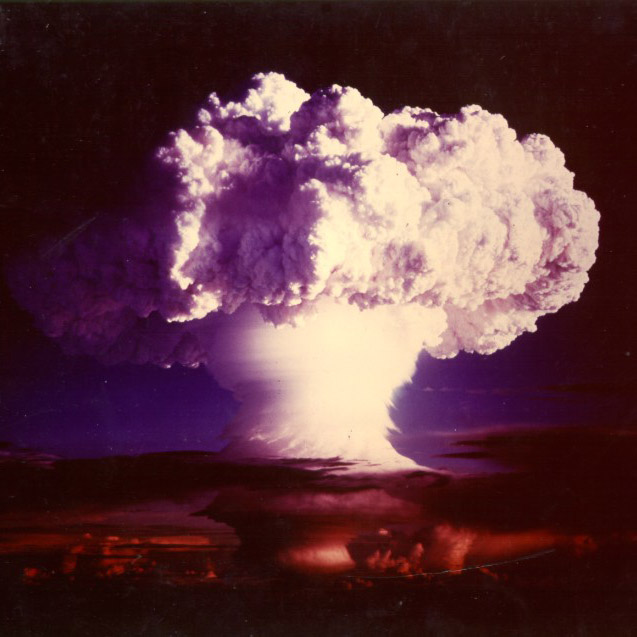Fermium
100
Fm
Gruppe
n/a
Periode
7
Block
f
Protonen
Elektronen
Neutronen
100
100
157
Generelle Eigenschaften
Ordnungszahl
100
Atommasse
[257]
Massenzahl
257
Kategorie
Actinoide
Farbe
n/a
Radioaktiv
Ja
Named after Nobel laureate Enrico Fermi, one of the pioneers of nuclear physics
Kristallstruktur
n/a
Geschichte
Fermium was discovered as a component of the debris of the first hydrogen bomb explosion in 1952.
It was identified by Albert Ghiorso and co-workers at the University of California, Berkeley in collaboration with the Argonne and Los Alamos National Laboratories, in the fallout from the Ivy Mike nuclear test.
The new element was produced by the nuclear fission of 17 neutrons with uranium-238.
It was identified by Albert Ghiorso and co-workers at the University of California, Berkeley in collaboration with the Argonne and Los Alamos National Laboratories, in the fallout from the Ivy Mike nuclear test.
The new element was produced by the nuclear fission of 17 neutrons with uranium-238.
Elektronen pro Schale
2, 8, 18, 32, 30, 8, 2
Elektronenkonfiguration
[Rn] 5f12 7s2
Sixteen isotopes of fermium are known to exist
Physikalische Eigenschaften
Aggregatzustand
Fest
Dichte
-
Schmelzpunkt
1800,15 K | 1527 °C | 2780,6 °F
Siedepunkt
-
Schmelzwärme
n/a
Verdampfungswärme
n/a
Spezifische Wärmekapazität
-
Häufigkeit in der Erdkruste
n/a
Häufigkeit im Universum
n/a

Danksagungen für Bilder: Wikimedia Commons (National Nuclear Security Administration)
Fermium was first observed in the fallout from the Ivy Mike nuclear test
CAS-Nummer
7440-72-4
PubChem CID-Nummer
n/a
Atomeigenschaften
Atomradius
-
Kovalenter Radius
-
Elektronegativität
1,3 (Pauling-Skala)
Ionisierungsenergie
6,5 eV
Molares Volumen
29,1 cm3/mol
Wärmeleitfähigkeit
0,1 W/cm·K
Oxidationszustände
2, 3
Anwendung
Fermium is used for scientific research purposes only.
Fermium is harmful due to its radioactivity
Isotope
Stabile Isotope
-Instabile Isotope
241Fm, 242Fm, 243Fm, 244Fm, 245Fm, 246Fm, 247Fm, 248Fm, 249Fm, 250Fm, 251Fm, 252Fm, 253Fm, 254Fm, 255Fm, 256Fm, 257Fm, 258Fm, 259Fm, 260Fm